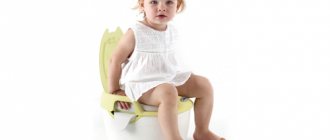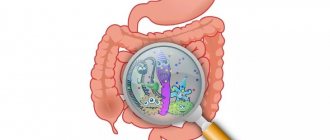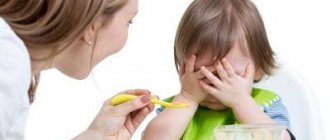Causes of baby vomiting
Thanks to the protective reflex function, hazardous substances are removed and the baby’s digestive system is cleansed. The factor of vomiting in infants is based on the formation of the digestive system. In older children it can be caused by a number of diseases.
Vomiting of bile in a small child is caused by various factors:
- Infectious infections, viral inflammation of the stomach and intestines.
- Violation of child nutrition rules. Eating stale food, incompatible foods, too sweet, spicy, fatty foods.
- Psychological stress caused by nervous problems.
- Disease of internal organs: kidneys, liver, inflamed gall bladder, etc.
Vomiting in babies is a serious signal of health problems. Vomiting bile indicates a number of diseases associated with the gastrointestinal tract (digestive tract), such as gastritis or cholecystitis. High temperature, systematic vomiting, nausea are good reasons to consult a doctor as soon as possible to prevent complications.
What to do if your child is vomiting bile
What to do if a child vomits bile? If your child is vomiting bile, it is important to first contact your pediatrician. It will determine why the baby is throwing up or why he is burping or vomiting bile. Having determined what the child has, the doctor will prescribe treatment or simply advise changing the diet. Sometimes, having found out why a child is vomiting with jelly, it is enough to exclude provoking foods from the diet.
If the cause is stagnation of bile or bending of the gallbladder, treatment methods involve the use of choleretic drugs and hepatoprotectors, approved in childhood.
First aid for a child
The main principle of normalizing the functioning of the gastrointestinal tract is to adjust the diet so that the stomach is restored. If the parent knows the causes of stomach problems, they need to be eliminated. With occasional vomiting, dietary nutrition and increased fluid intake are necessary.
Tips on how to help your baby:
- Calm the child, wash his face with cool water, give a small amount of liquid to rinse the mouth.
- Provide increased fluid intake (1-1.5 liters) of cold drinks. In small quantities and often. Suitable drinks are bottled mineral water, sweetened water (20 g of sugar per liter), children's tea, rehydration solution.
- Create an optimal diet. Do not feed anything other than liquids for the first few hours. Later add unsweetened cookies, rice, potatoes, pasta, ripe banana, meat broth (without fat). Eliminate milk, fatty foods, mixed juices.
- Don't force your child to eat. Offer food often and in small portions.
- Monitor the general condition of the baby and body temperature.
- Follow your child’s daily routine to restore his mental state. A psychological disorder may indicate problems with the nervous system. Stress can cause angina pectoris, which provokes gag reflexes.
- If the condition worsens, seek medical help immediately.
In what cases is it necessary to consult a doctor immediately?
Vomiting can cause great harm to the baby's health. Properly prescribed treatment and doctor’s recommendations will help improve the baby’s well-being and relieve him of the feeling of nausea and eliminate the cause of vomiting.
Mandatory medical assistance, hospitalization may be required if vomiting:
- Bloody, yellow discharge appears.
- Associated with head trauma, possible concussion.
- The child has increasing abdominal pain, spasms at intervals, the abdomen is hard, inflamed, and painful.
- The baby is apathetic, sleepy, if his eyes are flooded.
- Rejects fluid and stops urinating.
- Often nausea, a sudden attack of vomiting appears.
- Poor health is accompanied by a headache with fever.
- There is diarrhea (possibly green).
- The diet does not help, the baby continues to vomit, food comes out.
- Accompanied by a temperature above 38C.
- A dangerous symptom is dehydration (dry mouth, decreased salivation, accelerated pulse, irregular breathing rhythm, disorientation, lost gaze, no tears when crying, the child is irritable, quiet, if babies have a slightly swollen large fontanelle, daytime sleep lasts more than 4 hours , while the baby may not have a temperature).
Principles of pathology therapy
If vomiting bile was sporadic, you can do nothing - the condition will stabilize on its own. But if the attacks become more frequent, you need to visit a doctor and undergo the recommended examinations with your child. Based on their answers, the specialist diagnoses a functional disorder of the digestive organ. For treatment, the child will be prescribed suitable choleretic medications:
- Holaflux;
- Flamin;
- Holagogum;
- Berberine et al.
From folk remedies, children are recommended to make herbal teas, the components of which have choleretic properties. Immortelle, mint or angelica should be taken in the amount of 1 tsp, pour 200 ml of boiling water and cover for 15 minutes. Give the child 4 rubles. per day before meals. Single dosage – ½ cup. Course – 10 days.
How else can you help your child? Nutritionists advise giving the patient cool lime and cranberry juices. For frequent episodes of bilious vomiting, tea with ginger and cinnamon is helpful. You should not feed your baby products with caffeine during therapy. It is also necessary to abstain from tomatoes and citrus fruits - they irritate the gastric mucosa.
Daily meals should be portioned, that is, the child should eat little and often. You can’t have dinner right before bed, drink black tea, soda, or coffee. It is important to eliminate spices from your diet. It is advisable to sleep on your side.
- If a teenager is poisoned by alcoholic drinks, in addition to gastric lavage, sorbents are recommended (the drugs will remove toxic substances), a sufficient number of hours of sleep and a short-term fasting diet.
- Do not give fatty broths to a child who is vomiting. The first course should be dietary. You can prepare it from young chicken.
- To prevent dehydration, give your baby a decoction of rose hips, mint leaves and dried chamomile flowers. Give non-carbonated mineral waters.
Do not try to treat your child on your own without consulting a doctor. If the baby vomits, but there is no temperature, this condition is still dangerous. With repeated episodes, it causes dehydration and loss of consciousness. In this case, you cannot stay at home - the child requires hospitalization.
If a child vomits bile, this is always a cause for concern and anxiety among his parents. But you need to figure out why this happens, when you need to see a doctor, and what to do on your own.
How to treat vomiting of bile in children
Vomiting is a protective reflex of the body, regardless of how old a person is. Feeling nauseous, even for an adult, is an unpleasant experience. The first and main rule of treatment is that all prescriptions and medications should only be taken with the doctor’s permission; do not self-medicate. Therapy depends on the underlying disease.
If the cause is food poisoning, then gastric lavage is performed. At home, the procedure is done using warm boiled water. After washing, be sure to give an antiemetic.
If vomiting is associated with a head injury, lay the child horizontally, maintain bed rest, and a doctor's examination is necessary for an accurate diagnosis.
There are traditional ways to ease the feeling of nausea and reduce vomiting in children. Medicinal plants that have choleretic, antispasmodic, and antimicrobial effects are used.
- Herbal teas are brewed from peppermint leaves, immortelle, and chamomile flowers. Give the baby a decoction 4-5 times a day, 30-50 ml before meals. The course of treatment is 10 days.
- It is recommended to make slightly sweetened drinks with lemon and cranberries.
- Ginger tea helps relieve nausea.
- Dill water helps cope with the feeling of nausea and can help reduce gas formation in the stomach.
- Steam valerian root with boiling water and place on low heat for 10-12 minutes. Give the solution 2 times a day, 1 small spoon.
Attention! If you do not know the exact reason, it is forbidden to use traditional methods.
After examination and tests, the doctor makes a diagnosis. Based on this, the following groups of drugs are prescribed:
- Antiemetics. Children may be prescribed the following medications: Bromoprid, Cerucal.
- Antispasmodics are used for stomach pain. No-shpa and Drotaverin-Forte are prescribed for children.
- Sorbents cleanse the body of toxic compounds. Use activated carbon, Smecta, Enterosgel, Polysorb, Laktofiltrum.
- Broad-spectrum antibiotics are prescribed for intestinal infections: Azithromycin, Nifuroxazide, Cefix.
- Rehydration drugs to prevent dehydration: Glucosolan, Normohydron, Regidron.
Every year new medications appear. The use of drugs is permitted only after an accurate diagnosis has been determined by a competent physician.
Contraindications to drugs
Contraindications for medications that relieve abdominal pain and relieve inflammation:
- A contraindication to any drug is individual intolerance to the constituent components.
- Antispasmodics should not be taken by hypotensive patients. The substance included in the drug relaxes the muscles of the stomach and the walls of blood vessels.
- Choleretic drugs are not taken for cholelithiasis (cholelithiasis) or stomach ulcers.
In addition to contraindications, medications have side effects:
- Apathy and drowsiness.
- Feeling of nausea.
- Abdominal cramps.
- Redness of the skin, itching.
- Headache.
Side effects of drugs are rare, the body’s reaction to the composition is individual. Medicines are prescribed according to the patient's age.
The baby's health is in your hands. Follow all doctor's recommendations carefully.
Hello, dear parents. Today we will look at a condition such as vomiting bile in a child. You will learn what symptoms may accompany this phenomenon. Find out possible factors influencing the occurrence of vomiting. Let's talk about ways to help the baby, as well as possible treatment for such vomiting.
Why does it occur
Many reasons can influence the occurrence of vomiting in a child, in particular bile. It is worth considering that this process in itself is not a disease. This is a symptom indicating the presence of some disease in the child’s body.
There are groups of factors influencing the occurrence of such a condition.
- Central, which affects the brain:
- epilepsy;
- meningitis;
- increased intracranial pressure.
- Toxic:
- result of poisoning;
- infection;
- disturbance of metabolic processes in the body.
- Gastrointestinal diseases:
- gastritis;
- cholecystitis;
- JP;
- ulcer;
- pancreatitis;
- peritonitis;
- intestinal obstruction;
- appendicitis.
Causes and development factors
Vomiting is not an independent disease, but only a manifestation of some pathology.
The causes of this symptom, depending on the mechanism of its development, can be divided into the following groups:
- Central (with direct effect on the brain):
- meningitis;
- epilepsy;
- migraine;
- increased intracranial pressure;
- motion sickness, seasickness;
- increased blood pressure;
- traumatic brain injury;
- cerebral circulatory disorders.
- Toxic (effect of toxins on the vomiting center):
- poisoning (drugs, alcohol, household chemicals, etc.);
- infectious diseases;
- metabolic disorders: diabetes mellitus;
- thyroid pathology;
- chronic kidney and adrenal insufficiency.
- Digestive diseases:
- gastritis, peptic ulcer of the stomach and duodenum;
- biliary dyskinesia;
- cholecystitis;
- pancreatitis;
- acute conditions (obstruction, peritonitis, appendicitis).
Vomiting can be caused by motion sickness in transport
Severe pain of any origin, as well as coughing, can cause an attack of vomiting.
Vomiting with bile can occur in any of the above conditions as a result of the reflux of bitter contents from the duodenum. But the most common causes of such an impurity are dysfunction of the biliary tract and gallbladder, cholecystitis, pancreatitis, and abnormalities of the duodenum .
Additional symptoms
Based on what disease provokes vomiting, the type and nature of vomit may differ.
- In the presence of a disease associated with the brain, vomiting will be scanty, there will be no dependence on food intake, and it is almost always accompanied by pain in the head. It is also worth considering that in this case, vomiting occurs suddenly, without nausea and does not bring relief.
- For pathologies of the gastrointestinal tract. It mainly appears after eating, brings relief, and is accompanied by abdominal pain. If chronic gastritis occurs, vomiting may occur in the morning.
- Exacerbation of peptic ulcer disease - profuse vomiting, sour smell.
- Inflammation of the gallbladder, dyskinesia. Pain occurs in the right hypochondrium and can radiate under the shoulder blade and into the shoulder.
- Pancreatitis is characterized by repeated vomiting that does not bring relief. There is a girdle pain.
- Diseases of the biliary tract, the presence of a duodenal ulcer are accompanied by prolonged vomiting. The color of the vomit is green or yellow, and there may be white foam.
It is worth considering such characteristic symptoms as the presence of fever, diarrhea or repeated vomiting. These signs can narrow the range of possible pathologies.
- If this condition is repeated many times, this may indicate both the presence of an intestinal infection and gastritis. But most often the problem is the syndrome of cyclic vomiting, which develops mainly due to physical fatigue, stress or an infectious disease.
- If vomiting with fever, this is most likely a sign of an infection in the body, an inflammatory process, or intestinal poisoning. Appendicitis, pancreatitis, and peritonitis may occur here. If you have these symptoms, you should immediately consult a doctor or call an ambulance. If there is vomiting and fever, along with severe headaches, meningitis may occur.
- If vomiting without fever, then most likely poisoning or a viral infection can be ruled out. But it is also worth considering the likelihood of a weakened immune system, in which the temperature will not rise, even if there is an intestinal infection. In most cases, this condition is observed with helminthiasis, liver diseases, and gastritis.
- If, in addition to the actual vomiting of bile, there is diarrhea, then there may also be several options that provoke this condition:
- gastritis, accompanied by abdominal pain and general weakness;
- dysbiosis, more often develops if preceded by taking antibiotics;
- pancreatitis, with this condition, remnants of undigested food are noticeable in the stool.
If vomiting and diarrhea are also accompanied by a high temperature, then there is an intestinal infection or serious poisoning, for example, as a result of eating fatty foods. Diarrhea and vomiting help remove toxins. Parents should understand that in such a situation it is extremely important to replenish the water-salt balance in order to prevent the development of dehydration.
- If the condition is accompanied by abdominal pain, problems with the gallbladder cannot be ruled out, namely, an inflammatory process or difficulties with the patency of the ducts. When bile is released into the stomach, a state of nausea initially occurs, followed by vomiting, attacks begin to recur, a new portion of bile is released, and the patient’s health condition worsens. In addition to problems with the gallbladder, it may also indicate the presence of:
- viral hepatitis;
- intestinal blockage, particularly observed in newborns;
- gastritis.
These symptoms can also be observed in preschool children if there is no normal diet. That is why children before the age of seven are not recommended to consume foods such as canned food, smoked sausages, spices, and spicy foods.
Treatment methods
Treatment methods for pathological conditions in which vomiting of bile occurs in a small child without fever or with its presence depend on the cause of the disease. An indispensable condition for a speedy recovery is the prevention of dehydration; in this case, it will not be possible to do without hospital treatment.
Dysfunction of the digestive organs is subject to drug therapy by a gastroenterologist. Vomiting with bile persists until the disease is completely eliminated; treatment is symptomatic; it is necessary to follow a diet.
In case of malnutrition, it is necessary to remain at rest for several hours, abstain from any meals, and give the digestive organs rest.
If there is bitterness in the mouth and heartburn, if the baby is nauseous, the doctor will prescribe medications that stabilize the acidity in the stomach and relieve inflammation of the mucous membranes. These drugs include drugs from the group of antacids, available in the form of suspensions or lozenges. You cannot prescribe such drugs on your own without consulting a doctor due to the extensive list of contraindications.
The approach in medicine to the treatment of bacterial or viral infections of the digestive organs is completely different. It is not recommended to stop such vomiting and diarrhea until the digestive tract is completely cleansed of pathological microorganisms, supplementing the treatment with drinking plenty of fluids in small sips from a spoon or from a syringe and taking sorbents. Drinking a large volume of liquid once provokes greater irritation of the stomach walls. If there is abdominal pain, if the child has a fever and fever, the symptoms are relieved with painkillers and antipyretics. In severe cases of intoxication, the patient is prescribed antibiotic therapy, the course is usually at least 7 days; you should not stop taking the tablets before the prescribed time once the patient’s condition improves.
Diet is an important component of treatment; after the attacks of nausea have stopped, you should observe food rest for at least 6 hours, refusing any meals. You shouldn't feed a child if he doesn't want to eat. When appetite is restored, liquid porridges without milk and butter, low-fat broths, and pureed vegetable soups are introduced into the diet. The menu is expanded gradually, using the same principle to increase the amount of food eaten.
Dr. Komarovsky advises that before the doctor arrives, place the child horizontally so that the head is on an elevation, turned to one side, this will help prevent vomit from entering the respiratory system. Until a specialist arrives, you should refrain from treating with drugs from your home medicine cabinet - this may make it difficult to make a correct diagnosis.
When you need to urgently call a doctor
There are a number of conditions in which calling a doctor is vital. Parents should pay attention to these warning signs:
- complaints of very severe pain in the abdominal area;
- strong increase in temperature;
- repeated vomiting, which was preceded by eating spoiled foods or taking medications;
- vomiting accompanied by diarrhea;
- the appearance of signs of dehydration (dry tongue, skin, mucous membranes, crying without tears, lack of urine for more than six hours);
- blood is found in the vomit.
First aid
- First of all, you need to think about the importance of maintaining complete calm. You should make sure that your baby calms down too, because vomiting will cause him considerable anxiety.
- Call the doctor. While you are waiting for him, do not leave your child for a minute.
- It is important that the little one does not lie on his back, otherwise you risk vomit getting into the respiratory tract. It is recommended to maintain an upright body position or for the baby to lie on his side, or at least turn his head to the side.
- It is important to give fluids if you are vomiting to prevent dehydration. In such a situation, solutions of salts and glucose are recommended, which can be prepared at home using pharmaceutical preparations in powder form. You can also make this product at home from salt, sugar and soda. It is important that drinks are given in small portions, but often.
- Before an examination by a specialist, it is unacceptable to give the child any medications, including antiemetics.
Treatment options
Based on the diagnosis, the type of therapy will differ. The following groups of drugs are most often used.
- Prokinetics. Such drugs are prescribed to coordinate the functioning of the digestive system. This could be Motilak, Cerucal, Motilium.
- Receptor blocking drugs. For example, Dramamine, No-spasm.
- Antispasmodics. Medicines that can reduce contraction and reduce the tone of smooth muscles of the digestive tract, for example, Drotaverine, Spasmol or No-shpa.
- A sedative to calm the condition, for example, Persen.
- Sorbents that allow you to accelerate the removal of toxic substances from the body.
- If there is an intestinal infection - antibiotics.
- Regidron can be used to restore water balance.
- Antiemetic drugs, for example, Motilium.
Surgery may be used. Only in situations where conservative therapy is powerless, in particular, with cholelithiasis, if the duct is clogged, with abnormal development of the bile ducts, peritonitis or appendicitis.
Diet features
Probably every parent knows that after such a malfunction in the body it is necessary to follow a certain diet.
- After such vomiting, you need to feed him only when he asks and in small portions.
- The following is prohibited:
- cold food;
- soda;
- salty;
- fatty foods;
- smoked;
- fried foods;
- conservation;
- food that is unpleasant for the child.
- The diet should include:
- rice broth;
- dried fruit compote;
- boiled vegetables;
- Rye bread;
- lean meat;
- lean fish.
Folk remedies
You can also alleviate the child’s condition using traditional medicine.
- Beetroot juice. Boil the beets until half cooked, grate them, and squeeze out the juice. The child is given a teaspoon three times a day.
- Peppermint infusion. The plant is crushed, poured with hot water, boiling water, and left to infuse for two hours. Use a tablespoon three times a day.
- A decoction of dill seeds. Take a teaspoon of seeds, add water (one glass), and bring to a boil. After cooling, give a tablespoon three times a day.
- Freshly squeezed potato or carrot juice.
Precautionary measures
- In order for parents to take care of preventing possible vomiting in their child, special importance must be given to proper nutrition of the toddler.
- You cannot force feed your baby.
- Meals should include only high-quality and fresh foods.
- In the presence of chronic pathologies of the digestive system, in particular, diseases associated with the gallbladder and biliary tract, it is necessary to take medications regularly.
- After the child eats, it is not recommended to get up suddenly or lie down immediately. You need to sit in an upright position for at least half an hour.
- It is important that the last meal occurs no less than three hours before going to bed.
- The baby, as well as the newborn, must be held in an upright position for 20 minutes after feeding.
- It is important to take care of a favorable climate in the family, minimize the impact of stress, and not overstrain the child.
- You need to think about general strengthening activities, hardening procedures, gymnastics, and regular walks in the fresh air.
- It is important to observe the prevention of infectious and viral diseases, in particular, through timely vaccination.
Now you know for what reasons vomiting of bile may occur, and what the treatment may be for this. As you can see, serious health problems are often to blame. Therefore, you should not hesitate, try to do something yourself. It is better to immediately seek help from a specialist rather than waste precious time.
The appearance of nausea and vomiting signal a malfunction of the child’s body, but they are usually protective reactions, helping to get rid of harmful substances or bacteria. Most often, vomiting releases partially digested food that the child ate shortly before the onset of the symptom. It may also contain various impurities, for example, bile. Why is it possible for bile to get into the vomit and how can you help your baby when he is vomiting bile?
The danger of vomiting bile in a child
The presence of bile in a child’s vomit is a condition that is not typical for children’s health. When bile acids enter the stomach, irritation of the walls occurs and gastritis develops.
Continuous vomiting against the background of additional diarrhea in a short time can lead to dehydration of the child’s body - a pathological condition that can lead to death. To maintain the water balance of a weakened body, the child needs to be given small amounts of water frequently; special saline solutions from pharmacies are suitable for this. If your baby has dark circles under the eyes, bad breath, angular facial features, dry mucous membranes, or rapid heartbeat, you should immediately call an ambulance.
The presence of bile signals serious malfunctions in the child’s body. Almost always, when such a pathology occurs, a small patient requires medication and careful diagnosis; there are many reasons why a child vomits bile. Concomitant symptoms and medical examinations will tell you about these reasons.
What does it look like?
The secretion of bile with vomit gives it a yellowish or greenish color. The contents of the stomach are thrown out through the mouth due to a sharp contraction of the muscles of the diaphragm, the stomach itself and the abdominal wall.
Before vomiting occurs, the child usually feels an attack of nausea, turns pale, and may experience chills. The more episodes of vomiting a child has, the more weakened he becomes and the higher the risk of developing dehydration.
The difference between vomiting and regurgitation
It is very important to distinguish between these two pathological conditions. Regurgitation is a physiological norm that is needed in order to get rid of excess air in the baby’s stomach. Gagging can be distinguished from normal regurgitation by the following signs:
- the child becomes restless, constantly cries and is capricious,
- gagging tends to recur,
- body temperature rises,
- the skin becomes pale,
- the digestive tract expels almost all the contents of the stomach,
- the mass that comes out has a yellow or greenish tint; there may be an admixture of bile.
Possible reasons
Most often, vomiting bile is a symptom of food poisoning or another disease of the digestive tract that causes repeated bouts of vomiting. Often, such vomiting is accompanied by other symptoms of gastrointestinal damage - diarrhea, severe abdominal pain, chills, fever.
The causes of vomiting, in which bile impurities are determined, are called:
- Intestinal infection.
- Gallbladder diseases.
- Pylorospasm.
- Acute appendicitis.
- Biliary colic.
- Intestinal obstruction.
- Food poisoning.
- Congenital narrowing of the upper digestive tract.
- Renal colic.
- Vascular thrombosis in the intestine.
- Brain lesions.
Among the non-dangerous factors that cause the reflux of bile into the child’s stomach and its removal with vomit include mental overload, active games, and consumption of very fatty and spicy foods. In such cases, vomiting often occurs once or twice, and the general condition of the child is almost not disturbed.
Why does a child vomit bile?
The main reason is the entry of bile into the stomach, which is trying to get rid of the liquid that irritates it naturally. There may be several explanations for how this biological substance, which should be in the gallbladder, ends up in a completely different organ:
- intestinal infection;
- exacerbation of appendicitis;
- biliary or renal colic;
- severe poisoning;
- thrombosis of intestinal vessels;
- narrowing of the upper gastrointestinal tract.
In infancy
All of the above pathologies are rare in infants. Mothers of newborns can also sometimes observe yellow mucus in regurgitated sputum or full-blown vomiting.
Vomiting in infants indicates a congenital pathology of the bile ducts or that the baby, while moving along the birth canal, could have swallowed amniotic fluid or experienced a lack of oxygen.
In children from one year old and teenagers
Yellow or green vomiting in a child frightens parents no matter how old he is, and this unpleasant and dangerous phenomenon can occur at any age. A teenager may burp once or vomit bile due to overeating fatty foods. When vomiting recurs systematically, the child should be examined for pancreatitis, intestinal obstruction and diverticulosis. This will allow you to accurately diagnose the disease.
Sometimes bile in vomit is a reaction to drinking alcohol or cigarettes for the first time in your life . This is how the gallbladder reacts to unfamiliar toxins, throwing part of the mass it produces into the stomach.
Should I call a doctor?
Since the appearance of vomiting with bile impurities can be a sign of quite serious illnesses, calling a doctor is recommended in all cases of such a symptom occurring in childhood.
It is especially urgent to call a doctor in the following situations:
- The child complains of severe abdominal pain.
- The baby has a high temperature.
- The child vomited repeatedly and was accompanied by diarrhea.
- The child ate spoiled food or took any medications before vomiting.
- You notice signs of dehydration in your child.
Symptoms of diseases
Symptoms of intestinal tract diseases in childhood cannot be ignored by a specialist. Especially with nausea and vomiting, which lasts repeatedly, accompanied by abdominal pain. If green vomit with bile appears, this indicates that liver or gallbladder diseases are developing, or there are disturbances in the outflow of bile. More often than not, such symptoms are accompanied by acute pain.
If vomiting is repeated, accompanied by chills or fever, the baby should not be left in this condition without medical help. It is necessary to contact a specialist as quickly as possible, who will prescribe competent treatment for the child’s liver or gall bladder, having first determined what this symptom means in children.
First aid
- First of all, parents should calm themselves and their child, as episodes of vomiting are always alarming. You need to call a doctor and wait for him, without leaving your baby for a minute.
- To prevent the contents of the digestive tract from entering the baby's respiratory system, make sure that the baby is not lying on his back. The optimal position after vomiting is vertical. If the child is lying down, turn his head to the side.
- It is important to start giving your child fluids right away to prevent dehydration from developing. The best drinking option is considered to be solutions of glucose and salts, which are made from pharmaceutical powder preparations. You can also prepare similar solutions at home using sugar, soda and salt. Such solutions are given in small portions (a teaspoon) every five to ten minutes.
- No medications, especially antibiotics and antiemetics, should be given until the baby is examined by a doctor.
If the child is an infant, he can continue to be fed with mother's milk or formula, and if vomiting occurs, complementary feeding is temporarily discontinued.
It is not worth feeding older children with bile for some time (up to 5-6 hours) after vomiting, although most children have a reduced appetite after such a symptom. As soon as the child gets better and asks for food, give him light food in a pureed form, for example, rice porridge or pureed vegetables. Read more in the article about diet for vomiting.
Vomiting in childhood is common. It is associated with immaturity of the digestive and immune systems . Vomiting of bile in a child occurs both on an empty stomach and after eating. The process of emptying the stomach is a protective reaction of the body, a response to an internal or external stimulus.
Normally, there should be no bile in the stomach. Its casting can be one-time or constant. Observation of a child who has vomited has valuable diagnostic value and helps in choosing methods for examining young patients. Bile in the stomach is an unconditional reason to see a doctor.
Causes of regurgitation
A completely healthy toddler with a good appetite under the age of one year still does not know how to control either the amount of food he eats or the correctness of its intake. The cause of regurgitation may be banal overeating, especially if he eats mother's milk. The process of breastfeeding calms the baby, gives him a feeling of security and he is ready to do this for hours. The tiny stomach, which cannot yet stretch, and the short esophagus quickly fill up and the body resorts to the only way it knows how to get rid of the excess.
Causes of regurgitation in infants
The second reason is air getting into the mouth. Here all the blame lies with the mother. You need to carefully ensure that the baby takes the nipple tightly, and if you feed from a bottle, you need to hold it at the right angle and at the same time make sure that after shaking the mixture all the foam rises up. You should also choose the optimal size of the hole in the nipple so that not a single air bubble leaks out.
If the little one is cheerful, active, gaining weight well and regurgitation, if it occurs, then no later than an hour after he ate a hearty meal, then everything is fine and there is nothing to worry about. The gastrointestinal tract is not fully formed and strengthened, it is still adapting and some problems in its functioning are quite normal. Over time, when the stomach learns to stretch and the muscles responsible for the functioning of the esophagus and intestines become stronger, everything will return to normal.
These reasons are clear to everyone, they do not pose a great danger to the baby’s health and are easily eliminated. However, if a child burps up a mass in which yellow streaks, inclusions, or the entire vomit is clearly yellow in color, are noticeable, this is a reason not only to think about it, but also to contact a specialist. And if this happens periodically and is accompanied by crying, screaming and unnatural movements - even more so. In this case, comprehensive research and prompt diagnosis are necessary. You should start by seeing a pediatrician and having your child undergo a diagnostic ultrasound of the abdominal cavity.
Signs that indicate bile in the stomach
Vomiting is always preceded by nausea. Small reflux of bile is accompanied by systematic belching. In infants, this condition affects overall physical development - stunted growth, poor weight gain, restless sleep.
Gagging is caused by sharp contractions of the diaphragm, and for children this is a painful process. The discomfort is intensified by a feeling of bitterness in the mouth, heartburn, and heaviness in the iliac region. Children constantly experience a feeling of thirst, general weakness and loss of strength. Physical activity decreases sharply. Periodically, the child vomits bile.
Characteristics and coloring of vomit:
- green vomit – contains a large amount of bile, occurs during or after eating;
- if a child vomits yellow liquid - this is a mixture of bile and gastric juice, it happens on an empty stomach;
- vomit of a dark green hue with brown streaks - the presence of bile against the background of gastric bleeding of low intensity.
The condition may worsen - vomiting with fever, chills appear, the skin turns pale, becomes cold and sticky, and diarrhea occurs . This indicates an infectious or acute inflammatory process in the child’s body. If there is no rise in temperature, functional disorders of the digestive system occur in the body.
Why is there bile in children's vomit?
The reasons for this condition in a child vary. Some are safe for health and easily corrected, while others indicate serious diseases:
- Acute intestinal infections - salmonellosis, dysentery, escherichiosis. The diseases are accompanied by an enlarged liver and its toxic damage, impaired bile production and reflux into the stomach .
- Viral hepatitis A is an infectious infection of the liver with increased release of bilirubin into the blood, skin, and mucous membranes.
- Functional diseases (obstruction) of the gallbladder and excretory ducts - dyskinesia.
- Acute inflammatory diseases of the digestive system – cholecystitis, pancreatitis.
- Sphincter insufficiency - congenital or acquired (disease, surgery).
- Food, drug, chemical poisoning.
- Incorrect diet, poor quality or unbalanced food.
- Neurogenic factors - malnutrition and microcirculation of the brain, nervous strain, mental disorders.
In children in infancy, the cause of bilious vomiting can be a lack of pancreatic enzyme production . Predisposing factors are active physical games, emotional overload, fatty foods. In rare cases, if a child vomits bile, this is a sign of appendicitis.











